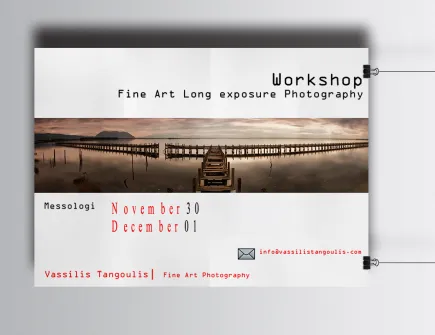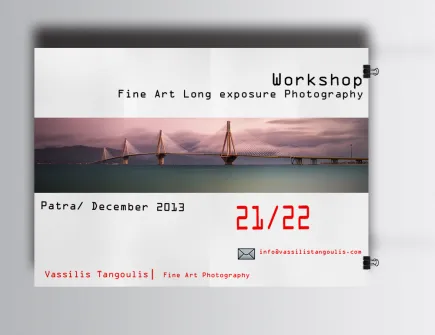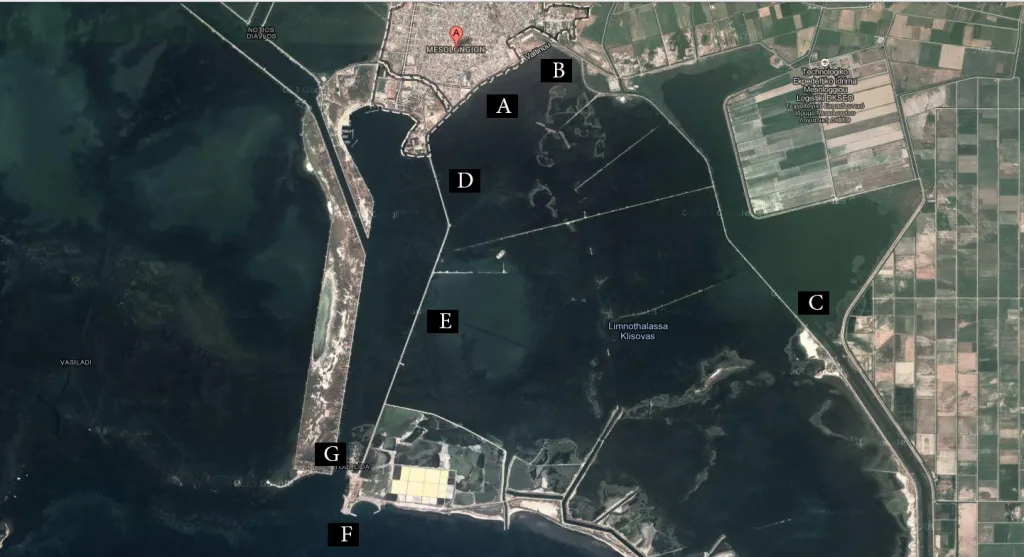I will start today giving more information about the two workshops i organize in Messologi (30 November, 1st December) and Patra (21-22 December). This post is about the places we are going to make the field shooting and i will give you a detailed description of them through various photos of mine both in color and black and white. Some of them are not in my portfolio yet..


Workshop of Fine Art Long exposure Photography in Messologi
History of Messologi
Messologi (Greek: Μεσολόγγι, Mesolongi) is a municipality of 34,416 people in western Greece. The town is the capital of Aetolia-Acarnania regional unit, and the seat of the municipality of Iera Poli Mesolongiou (Sacred City of Missolonghi). Messologi is known as the site of a dramatic siege during the Greek War of Independence, and of the death of poet Lord Byron.
Messologi was first mentioned by a Venetian called Paruta when he was describing the naval Battle of Lepanto near Nafpaktos. According to predominant historical opinion, its name came from the combination of two Italian words, MEZZO and LAGHI which means “in the middle of lakes” or MESSO and LAGHI (Messolaghi) which means “a place surrounded by lakes”. Until 1700, Messologi was under Venetian domination. Its inhabitants were mostly fishermen. They lived in cabins which were made of a kind of waterproof straw and reed and stood on stilts above sea water. These cabins or stilt-houses have always been called “pelades”.North-west of Messologi are the remains of Pleuron (‘Asfakovouni’), a town mentioned in Homer‘s works. It participated in the Trojan expedition and was destroyed in 234 BC by Demetrius II Aetolicus. The new town, which was built on the remains of old Pleuron, was one of the most important towns in Aitolia. Its monumental fortification comprised thirty towers and seven gates. The remains of the theatre and an enormous water tank with four compartments still exist.
During the Orlov Revolt in 1770 the fleet of Messologi was defeated and the town passed to the Ottomans. Messologi revolted on May 20, 1821 and was a major stronghold of the Greek rebels in the Greek War of Independence, being the seat of the Senate of Western Continental Greece. Its inhabitants successfully resisted a siege by Ottoman forces in 1822. The second siege started on April 15, 1825 by Reşid Mehmed Pasha whose army numbered 30,000 men and was later reinforced by another 10,000 men led by Ibrahim Pasha, son of Muhammad Ali Pasha of Egypt. After a year of relentless enemy attacks and facing starvation, the people of Messologi decided to leave the beleaguered city in the “Exodus of its Guards” (The Sortie) on the night of April 10, 1826. At the time, there were 10,500 people in Messologi, 3,500 of whom were armed. Very few people survived the Ottoman pincer movement after the betrayal of their plan.Due to the heroic stance of the population and the subsequent massacre of its inhabitants by the Turkish-Egyptian forces, the town of Messologi received the honorary title of Hiera Polis (the Sacred City), unique among other Greek cities. The famous British poet and philhellene Lord Byron, who supported the Greek struggle for independence, died in Messologi in 1824. He is commemorated by a cenotaph, containing his heart, and a statue located in the town.
Today
The town itself is very picturesque but also modern with functional, regular urban planning. Some very interesting buildings representative of traditional architecture can be seen here. People whose names were related to modern Greek history once lived in some of them. The mansion of the Trikoupis family, Palamas’ House, Valvios Library, Christos and Sophia Moschandreou Gallery of Modern Art emphasize the fact that Messologi has always been a city of some wealth and refinement. In addition, the Centre of Culture and Art, Diexodos, which hosts cultural events and exhibitions as well as the Museum of History and Art is housed in a neo-classical building in Markos Botsaris Square and hosts a collection of paintings indicative of the struggle of Messologi, further boosting the city’s cultural and artistic profile. The Missolonghi Byron Society also, founded in 1991 in the city, is a non profit organisation which is devoted to promoting scholarly and general understanding of Lord Byron‘s life and poetry as well as cultivating appreciation for other historical figures in the 19th-century international Philhellenic movement, idealists who, like Byron, gave their fortunes, talents, and lives for the cause of Greek War of Independence. The Messologi Byron Center is now located in the upper floor of Byron House.
Today, the Entrance Gate remains intact and so does part of the fortification of the Free Besieged which was rebuilt by King Otto. Past the gate, there is the Garden of Heroes where several famous and some anonymous heroes who fought during the Heroic Sortie are buried. The Garden of Heroes is the equivalent of the Elysian Fields for modern Greece. Every year the Memorial Day for the Exodus is celebrated on Palm Sunday (the Sunday before Easter); the Greek State is represented by high-ranking officials and foreign countries by their ambassadors.
Map of the places for the field-shooting

